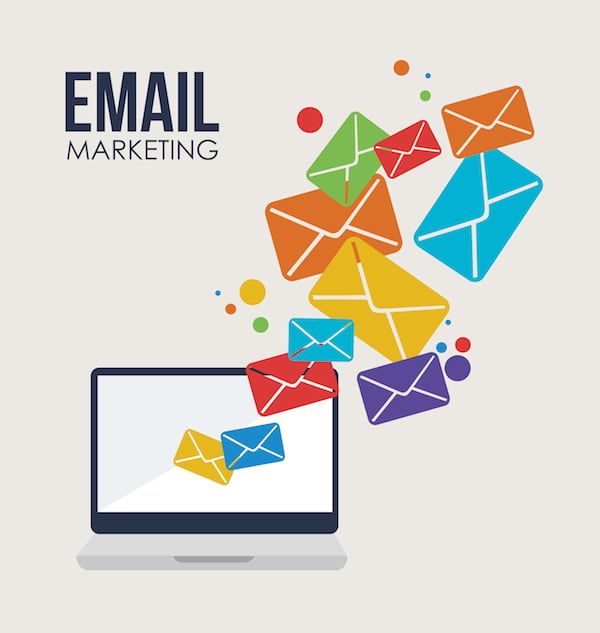
How to Write Marketing Emails in HubSpot that Succeed
October 24, 2014
By Andrew Macey

A day in the life of a marketer tends to revolve around email. Whether scheduling an upcoming e-blast or refining lead nurturing campaigns, there’s a constant strive for improvement. According to MarketingSherpa, 25% of email lists depreciate each year, which means that engagement is crucial. If only 75% of our contact list remains valid year after year, we must work to stay in relevant to these contacts by providing helpful information.
Defining Success
To optimize our emails for success, we must first define what our success metric will be. Some emails, such as a weekly or monthly newsletter, encourage the recipient to open the email and read the content provided. Others, such as ebook promotions, are looking for additional click-through back to a particular landing page, and then further engagement from there. Identifying the particular goal of your emails is the first step in making sure it will be successful. Although there are many types of emails, usually there are two common measurements: opens and clicks.
Optimizing for Success
When building an email, identify whether opens or clicks are the end goal. By making this clear, we can then tailor certain aspects of the email accordingly. There are unique parts of an email that directly affect these different types of engagement. Understanding how these correlate can save ample time in the email creation process.
Let’s start with email open rate.
For some emails, we measure success by the number or percentage of emails opened. This is usually the case when we are just providing information to our contacts, but not asking them to complete any further action. This could be certain newsletters, company updates, or product changes.
It is important note what is visible from a recipient’s inbox; mainly From Name, From Email Address, and Subject Line. To ensure a successful open rate, use the following best practices:
- Use real names and email addresses in the “from” sections.
Many marketers use a generic alias such as info@ or a Company X Marketing Team, which are impersonal and do not result in high open rates. - Write short, concise subject lines to ensure a high open rate.
It’s important to keep your subject lines under 50 characters, so that they do not get cut off. Having a short subject line ensures your recipients will see what you have say.
Next, let's talk about clicks
Click-through-rate is a great indicator as to how well emails perform. Most emails sent out encourage contacts to take further action on another website, such as downloading an offer or registering for an upcoming event. To best ensure that your contacts will take the desired action, we must optimize the content within the email.
- Calls-to-action: The most important part of the email content with regards to clicks would be links and calls-to-action. It’s important to tell the contact exactly what you want them to do when reading that email. Making sure there are links early in the content that connect to the offer and having a clear, engaging call-to-action at the bottom of the email will leave no doubt as to what the recipients are supposed to do.
- Personalization: Another strategy is to use personalization within the content. Remember, your HubSpot database is filled with information about your contacts, which we can use to customize these emails. Inserting the first name of a contact or adding in their job title can help to tailor the email uniquely to them and increase readership.
- Social Sharing: Finally, a great feature in HubSpot is social sharing. Each email allows you insert social sharing icons to encourage a piece of content or website page to be shared and posted to various social channels. Make sure to include these icons into your emails to increase promotion.
Measuring Success
When following email best practices, it’s important to measure our results to make sure there is improvement. Fortunately, HubSpot provides excellent reporting tools to do just that. When opening HubSpot’s email dashboard, you’re presented with graphical and list data of your previous email campaigns. You’re can see delivery rate, open rate, and click-through rate. You have the option to only display graphs based on certain measurements, or all data as a whole. This page is a great way to measure email success across multiple email sends, and track metrics over time.
To see more granular data, we can click into a particular email and see specifics as to how many and who opened and clicked this email. Finally, to dive even deeper, you are able to filter by specific links within the content, to report on which call-to-action or linked text was most successful.
The HubSpot sources graph is another great way to display email results. When looking at overall traffic, you’re able to see how many visitors came to your site through email, and specifically which emails those were. This can be extremely helpful for monthly reporting and attributing traffic growth to your email efforts.
Optimizing emails is an ongoing process. With each campaign we send out, we have a new opportunity to test a subject line or a new form of personalization. It’s important to figure out what type of communication works best with your audience specifically and then focus on these core components to ensure optimal engagement. What have you found that works best for your audience? Let us know by tweeting us at @smartbugmedia.

About the author
Andrew Macey was formerly the Director of Sales at SmartBug and is a HubSpot alumni. He has more than 5 years experience in inbound marketing and is a graduate of the University of Vermont. Read more articles by Andrew Macey.









